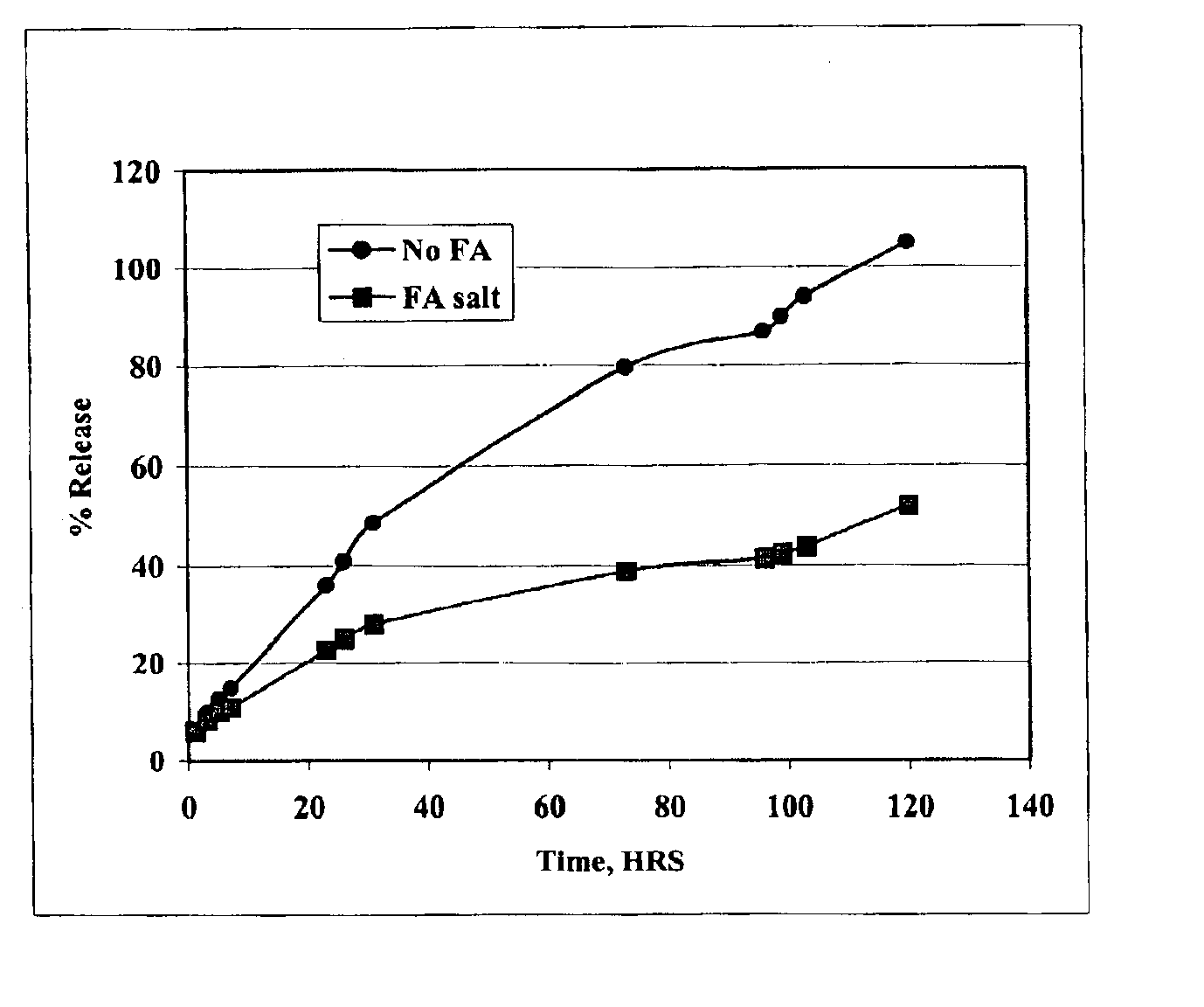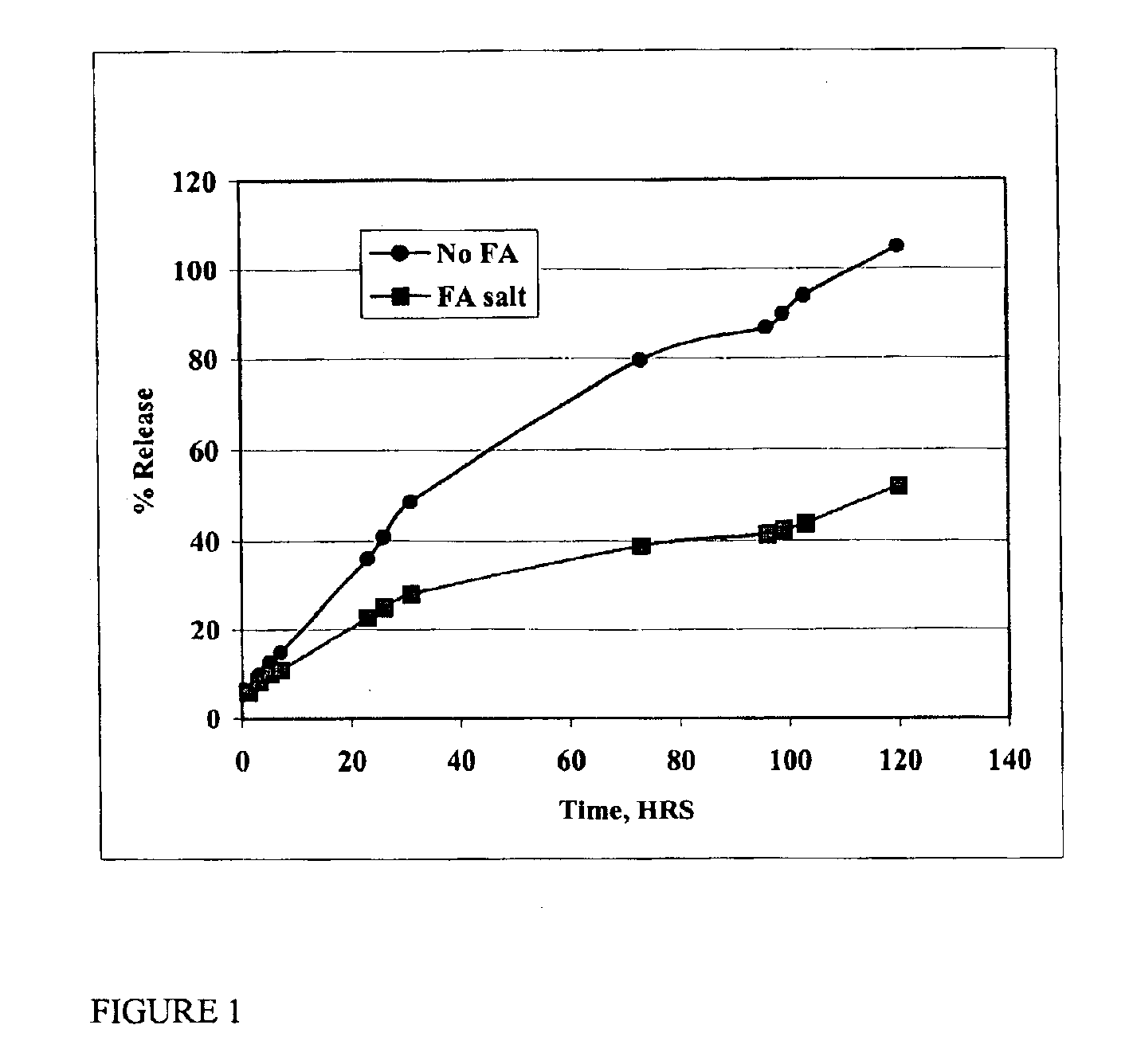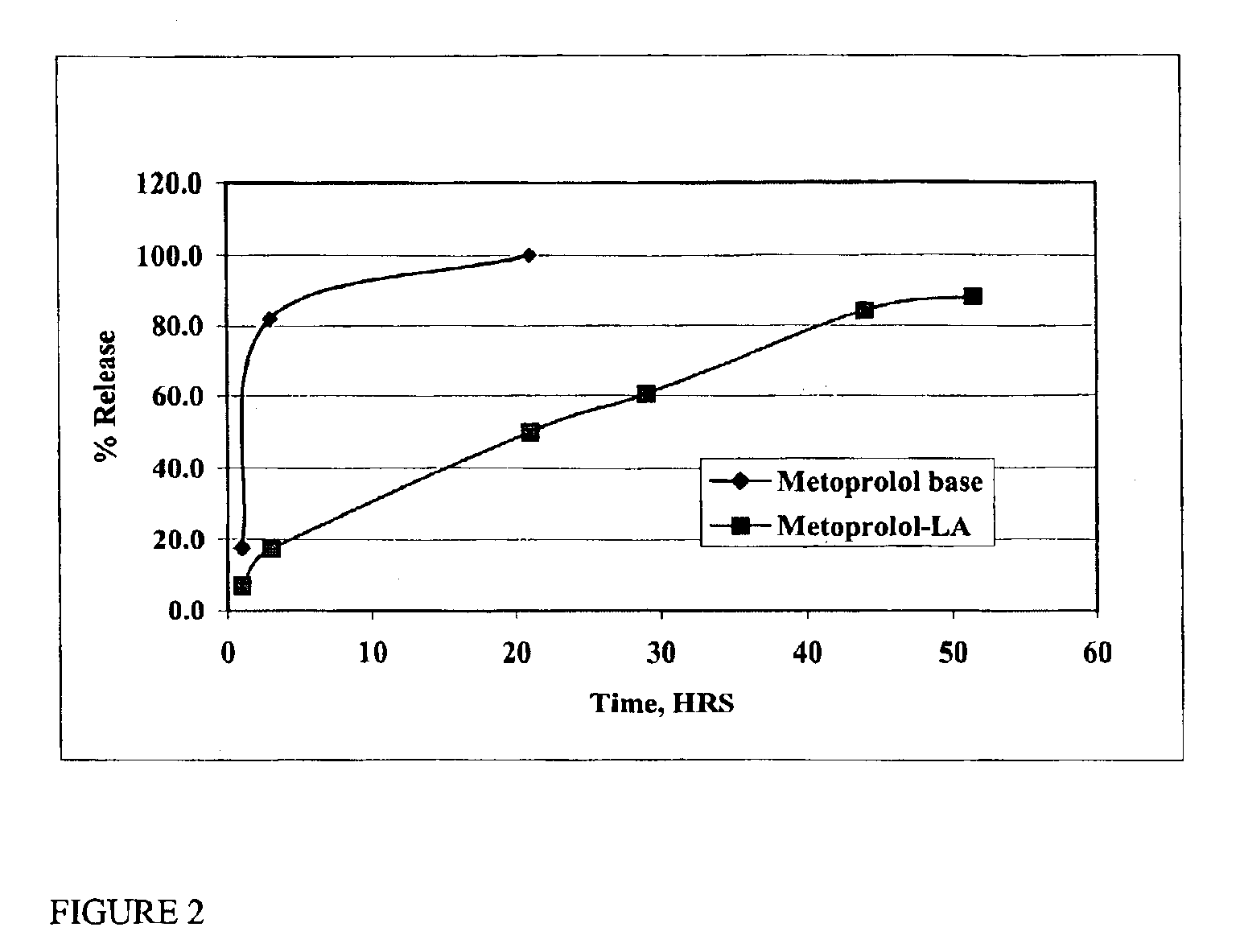Injectable compositions for the controlled delivery of pharmacologically active compound
a technology of injectable compositions and active compounds, which is applied in the direction of drug compositions, antibacterial agents, cardiovascular disorders, etc., can solve problems such as toxicity to the treated mammal, and achieve the effect of reducing toxicity and reducing investment in time and resources
- Summary
- Abstract
- Description
- Claims
- Application Information
AI Technical Summary
Benefits of technology
Problems solved by technology
Method used
Image
Examples
example 1
[0037]
[0038]Oxytetracycline has one tertiary amine group, and the hydrochloride salt of oxytetracycline is readily soluble in water. We have found that adding one mole of fatty acids to one mole of oxytetracycline creates a salt that has lower solubility in water but is more soluble than the starting oxytetracycline in N-methylpyrrolidone (NMP). When water is added to the NMP formulation, the salt precipitates.
[0039]The in vitro rate of release of oxytetracycline may be determined by sealing the formulation in a dialysis bag (Pierce, Rockford, Ill.), placing it in a reservoir of saline solution, and measuring the amount of drug in the saline as a function of time. The formulation of the present invention was compared with existing oxytetracycline formulations. FIG. 1 shows that the oxytetracycline formulation of the present invention is released into the saline at a rate substantially slower than that of the free drug.
[0040]An oxytetracycline composition according to ...
example 2
[0041]Metoprolol is an antihypertensive, antianginal and antiarrhythmic drug, of the following structure:
[0042]Its succinate and tartarate salts are available commercially under several trade names. Both these salts as well as the baseform of the drug-are highly soluble in water. The base form of the metoprolol was prepared from commercially available tartarate salt by standard procedure. When the amine group of metoprolol is neutralized with lauric acid, the resulting salt is poorly soluble in water, but readily soluble in pharmaceutically-acceptable non-aqueous solvents. A metoprolol composition according to the present invention was prepared by adding 0.3224 grams of metoprolol base and 0.2661 grams of lauric acid to 2.415 ml of NMP. The mixture was stirred for 30 minutes, resulting in a clear solution. One ml of this solution was sealed in a dialysis bag, and the bag was suspended in 150 ml of phosphate-buffered saline, pH 7.4. Aliquots were removed at various interva...
example 2a
[0043]Tilmicosin is an antibiotic in the macrolide class with the following structure:
[0044]It is effective against a broad range of bacteria, and is used for the treatment of respiratory diseases in cattle. The basic form is moderately soluble in aqueous solutions, while the chloride and phosphate salts are highly soluble. At elevated levels, tilmicosin is cardiotoxic, and therefore is not administered intravenously. For safety reasons, its use has been avoided almost entirely in sensitive species such as cats, goats, pigs, and horses.
[0045]When the two amine groups of tilmicosin are neutralized with any of several fatty acids (such as, for example, decanoic C10, lauric C12, myristic C14, palmitic C16, stearic C18, Oleic C18, elaidic C18, linoleic C18, and erucic C22), the resulting salt is poorly soluble in water, but readily soluble in pharmaceutically-acceptable non-aqueous solvents. When the formulation of the salt is sealed in a dialysis cassette and place in saline...
PUM
| Property | Measurement | Unit |
|---|---|---|
| volume | aaaaa | aaaaa |
| concentration | aaaaa | aaaaa |
| concentration | aaaaa | aaaaa |
Abstract
Description
Claims
Application Information
 Login to View More
Login to View More - R&D
- Intellectual Property
- Life Sciences
- Materials
- Tech Scout
- Unparalleled Data Quality
- Higher Quality Content
- 60% Fewer Hallucinations
Browse by: Latest US Patents, China's latest patents, Technical Efficacy Thesaurus, Application Domain, Technology Topic, Popular Technical Reports.
© 2025 PatSnap. All rights reserved.Legal|Privacy policy|Modern Slavery Act Transparency Statement|Sitemap|About US| Contact US: help@patsnap.com



